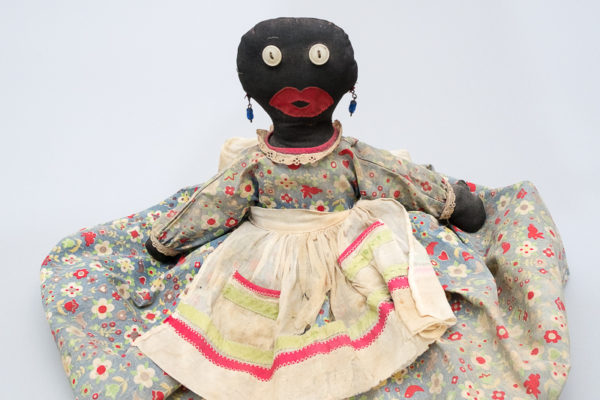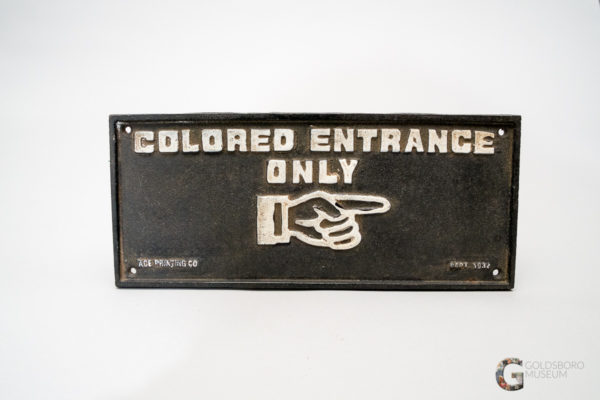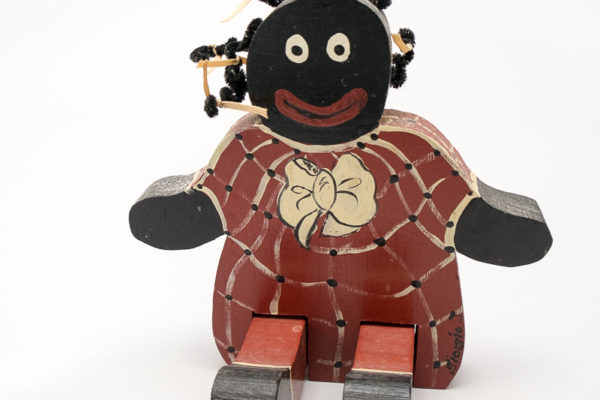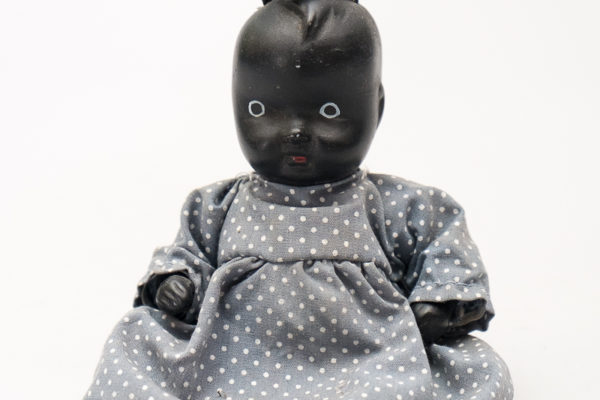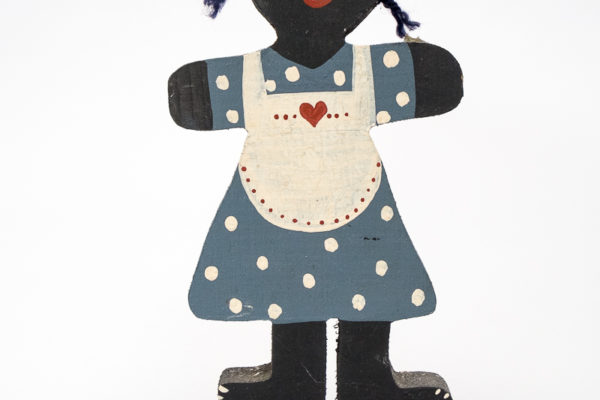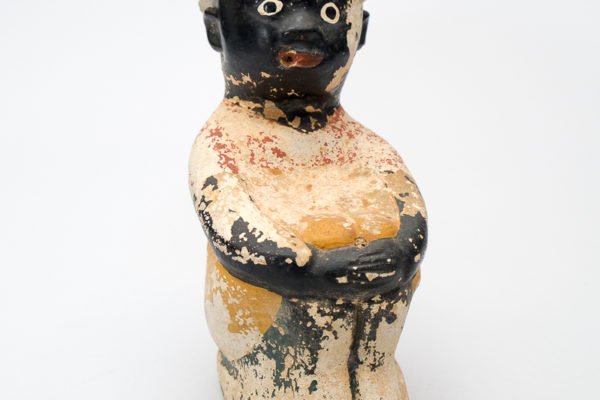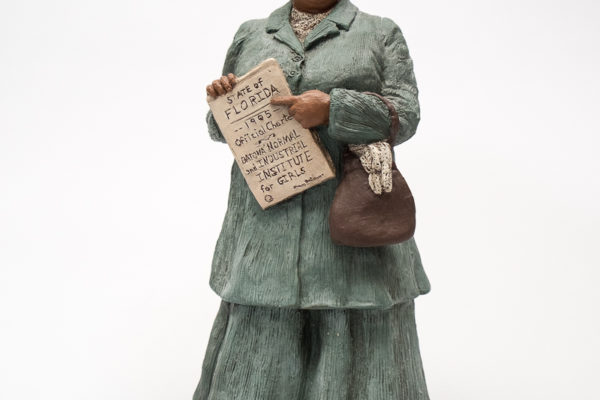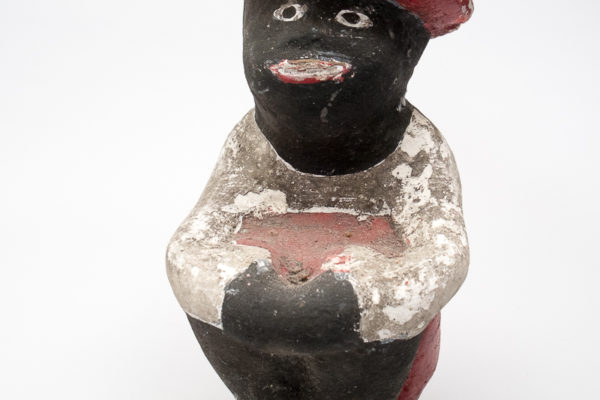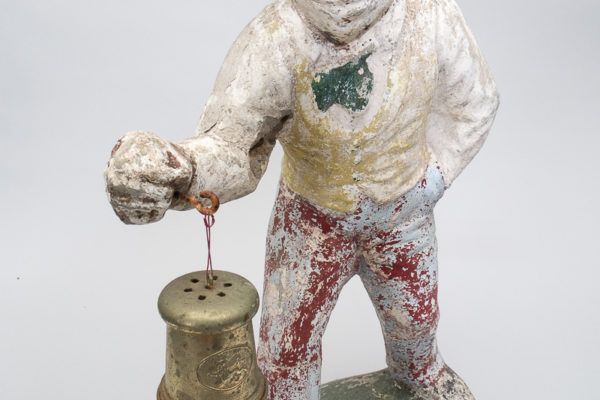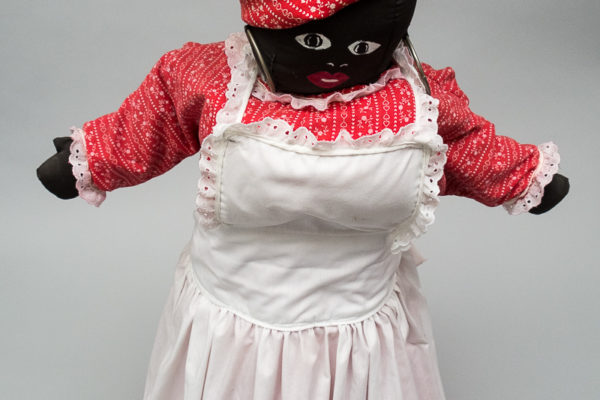Golliwag Doll
The golliwag is a fictional character created by Florence Kate Upton that and was often times seen in childrens books and stories in the late 1800’s. They were very popular around the 1970’s in parts of Europe and Australia. The doll has caricature like features. Most homes in Goldsboro did not have
Colored Entrance Sign
This sign signified which entrance to a building was to be used by people of color, and this sign is similar to the signs used for the drinking fountains. These signs were found on public buildings.
Wooden Pickaninny
The picaninny is an anti-Black caricature of children. They are “child coons”, with the same physical characteristics. Pickaninnies have bulging eyes, big red lips, and they speak in a primitive, stereotypical dialect. They are often shown stuffing their wide mouths with watermelon or chicken, which they usually stole. They are
Plastic Pickaninny
The picaninny is an anti-Black caricature of children. They are “child coons”, with the same physical characteristics. Pickaninnies have bulging eyes, big red lips, and they speak in a primitive, stereotypical dialect. They are often shown stuffing their wide mouths with watermelon or chicken, which they usually stole. They are
Wooden Pickaninny
The picaninny is an anti-Black caricature of children. They are “child coons”, with the same physical characteristics. Pickaninnies have bulging eyes, big red lips, and they speak in a primitive, stereotypical dialect. They are often shown stuffing their wide mouths with watermelon or chicken, which they usually stole. They are
Black Face Figurine
These figurines were not something that would typically be found in Goldsboro homes. The black face collection was used for display and in certain homes of people that would collect them. Black memorabilia, or as it was sometimes called, Black Americana, describes objects that somehow related to African American history. For
Dr. Mary McLeod Bethune Figurine
After her marriage and move to Florida, Bethune became determined to start a school for girls. Bethune moved from Palatka to Daytona because it had more economic opportunity; it had become a popular tourist destination and businesses were thriving. In October 1904, she rented a small house for $11.00 per
Black Face Statue
These figurines were not something that would typically be found in Goldsboro homes. The black face collection was used for display and in certain homes of people that would collect them. Black memorabilia, or as it was sometimes called, Black Americana, describes objects that somehow related to African American history. For
Groomsman Hitching Post
This is an American icon. It was used as a hitching post for horses and also before emancipation in 1865 and for the underground railroad. The hitching post served as a symbol to let slaves know that the house the post was in front of was a safe house. There
Mammy Doll
These figurines were not something that would typically be found in Goldsboro homes. The mammy collection was used for display and in some homes of people that would collect them. Black memorabilia, or as it was sometimes called, Black Americana, describes objects that somehow related to African American history. For the most

